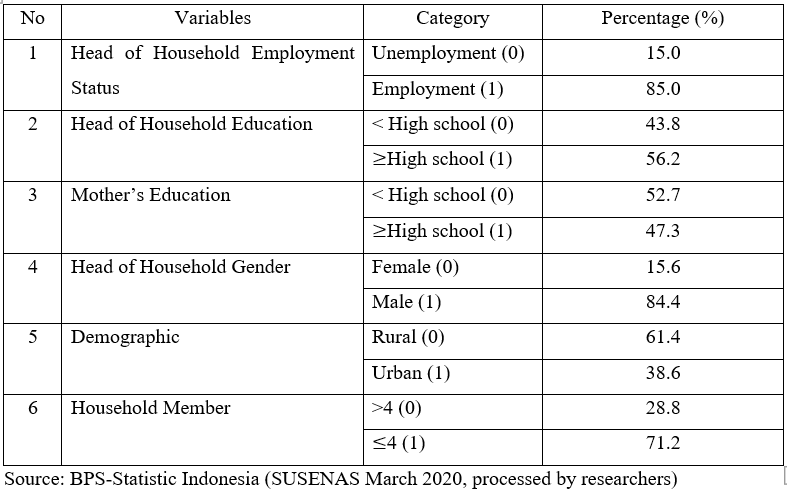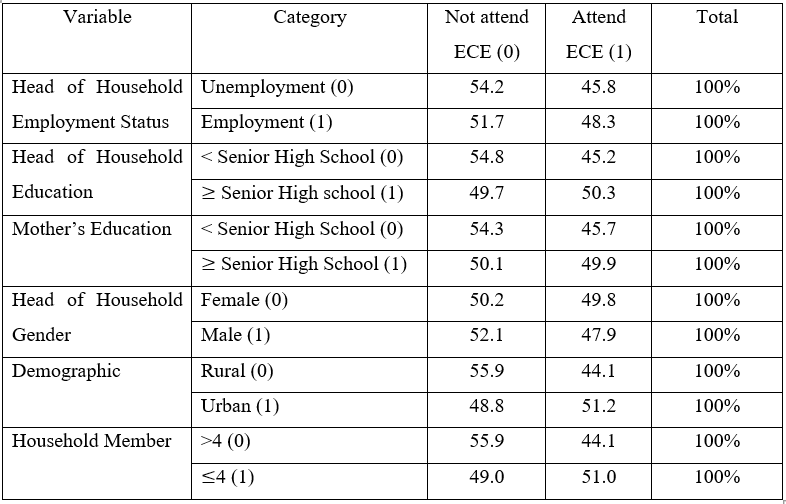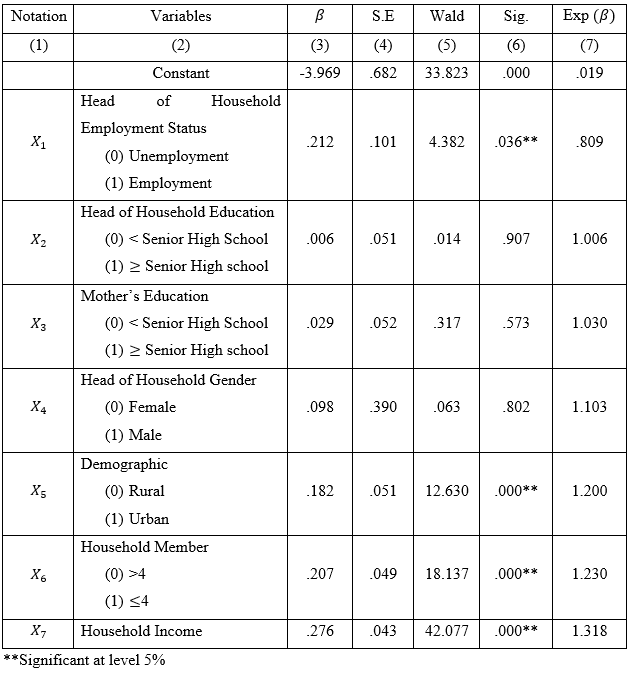Does family background affect early childhood education participation decision? Evidence from Indonesia
Conference
64th ISI World Statistics Congress - Ottawa, Canada
Format: CPS Abstract
Keywords: education, family background, logistic-model
Abstract
The early childhood phase is crucial for developing children's skills and intelligence, which will significantly influence their future lives as adults. The percentage of children (0-6 years) who participate in Early Childhood Education (ECE) in Indonesia only reaches 27.68%. Family is the closest environment and the first place for children in social interaction, so the family becomes a crucial factor for children’s development. This study aims to discuss the role of family socioeconomic and demographic factors on ECE enrolment status in Indonesia using the National Social and Economic Survey of March 2020 with Binary Logistic Regression and analysis descriptive. The result shows that the probability of children ages 0-10 years participating in early childhood education is higher for those who live in an urban area, come from households that have higher income, have a working household head, and a small number (less than 4) of family members. Moreover, most children ages 0-10 years who currently attend and have early childhood education, are from a family where the head of household and mother have completed high school or above. Children from female-headed households are more likely to participate in ECE than children from male-headed families. The early childhood development index shows a higher score for children with better family economic conditions, children who live in an urban area, and higher parental education.
Figures/Tables
Table 1. Description of Household Characteristic and Demography in Indonesia

Table 2. Percentage of ECE Enrollment Rates of Children in Indonesia by Family Background

Table 3. Hosmer and Lemeshow Test (Goodness of Fit Test)

Table 4. Partial Test Using Wald Test

